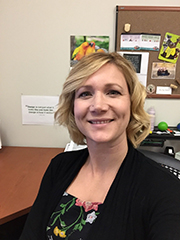
The value of using care management to engage high-risk members is now well established thanks to several case studies illustrating that care managers and community health workers can help members with chronic or complex conditions achieve important self-care goals. These interventions can improve patient outcomes and reduce unnecessary hospitalizations and other costs associated with patient care.
Effective care management programs can deliver a significant ROI and cost savings for health plans.
However, none of the positive results associated with care management can occur if the healthcare organization cannot first connect with and then engage high-risk members.
Vital Components to Effective Care Management
Although multiple dynamics influence the success of care management, two factors play the largest roles: establishing and maintaining contact with members and helping them build a needed support structure.
Connecting in a hard-to-connect world. Despite the many ways that now exist to communicate, it can be challenging to connect with high-risk members, particularly within transient populations. Phone numbers change, emails go to spam or are lost in crowded inboxes, texts from unknown numbers are ignored, and printed mail cannot be delivered or is tossed unopened.
Ideally, the best way to connect with members is by using their preferred communication method(s). Many health plans are starting to ask members at the time of enrollment how they would like to be contacted.
Using members preferred contact methods also improves the efficiency and reduces the costs of outreach efforts. For instance, if the health plan knows that members prefer text messages over snail mail, then it can save considerable printing and postage costs.
Going the extra mile. When a member’s preferred communication mode is unknown, a multi-channel approach is often effective. A brochure can be mailed to the member’s home that describes the care management program. This might be followed by an automated phone call, using an interactive voice response system that allows members to press a number and connect to a live representative.
These two approaches will have little direct impact on enrollment numbers. But each gives members a heads-up for the next step: a phone call from an enrollment specialist who confirms eligibility for the program through a short questionnaire and explains how the care management program can benefit the member. The goal of this phone call is to enroll the member into services and find out the member’s preferred communication medium (e.g., text, email). Once the care manager can establish the relationship, the preferred communication channel can be incorporated to engage members for working toward identified health goals.
Searching the neighborhood. When high-risk members, especially those who are transient, cannot be reached by mail or phone, a more intensive outreach approach is needed. One effective strategy is to deploy a community health worker to search for these members in libraries, shelters, and other hangouts in their last known neighborhood.
Tailoring the message to the member. Rather than describing the care management program in general terms, it is more effective to be specific about how the program can benefit individual members. This requires using analytics to comb through data and identify critical health issues for each high-risk member. For instance, claims data may reveal that a member has not filled a heart failure medication prescription, which could be a sign of non-compliance in a critical medication. After confirming this targeted issue, the case manager can help the member obtain and take her medication.
Enlisting members’ social support circles. Relationships matter in health care. Engaging high-risk members in chronic disease management relies heavily on the one-on-one rapport that care managers establish and maintain with members. Yet, as many care managers will attest, members also need support and encouragement from family and friends—from rides to medical appointments to uplifting conversations. Care managers help members first identify who they look to for support within their family and friends and where possible build the connectivity by collecting member permission and contact information for these support circles. Making these connections not only helps the care manager when needing assistance to take actionable steps in removing barriers to care for members but also to encourage and empower the member by identifying the network that exists around them.
Technology-Aided Relationships
There is a time and a place to use technology to connect and engage with high-risk members. When used effectively, technology can reduce the time it takes to enroll members in care management and help members and their caregivers stay on top of health goals.
But technology needs to be used to expand and fuel human connections, not replace them. At the heart of care management is an at-risk person who needs help. Sometimes that help only requires a text exchange, and other times it requires a phone call or a face-to-face conversation. Being able to engage people differently and effectively helps to ensure that high-risk members receive the care and support needed to have quality of life and optimal health.





